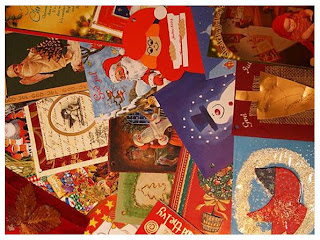|
This week's blog highlights another of our wonderful native plant species!
 |
| Bill Cook, Michigan State University, Bugwood.org |
Red-osier dogwood (Cornus sericea) ranges along the Pacific coast to Alaska and the Yukon Territory, throughout the country to the eastern states, and south to Mexico, usually at mid-to-low elevations. It also occurs in northern temperate forests in Europe and Asia.
In Chelan County, this dogwood is abundant along stream banks, and if you are down at one of our streams or rivers this time of year, you can easily distinguish it from other vegetation by its brilliant red branches contrasted beautifully against the white snow. Though an attractive plant year round, in winter it is particularly stunning!
Here's more on the red-osier dogwood:
The origin of the name “dogwood” is unknown. One theory is based on the use of a European dogwood species in making skewers, or daggers, (referred to as “dag”,” dague”, or “dagge” in old English). Another theory is that this species was used for washing mangy dogs.
The Potawotami, (a native tribe of the northern Mid-west), were the first to construct dream catchers, and made them out of red-osier dogwood stems.
Like willow, red-osier dogwood is a popular material for basket weaving. Different colors can be obtained depending on the season in which stems are harvested.
Red-osier dogwood is a relative of bunchberry, a lovely little flower you have probably encountered if you've been out hiking in the woodlands of the northern half of North America.
 |
| Rob Routledge, Sault College, Bugwood.org A red-osier relative: Bunchberry (Cornus canadensis) |
Red-osier dogwood is a relative of bunchberry, a lovely little flower you have probably encountered if you've been out hiking in the woodlands of the northern half of North America.
The inner bark mixed with other plants or minerals can make beige, pink, red, and black dyes.
Red-osier Dogwood has an impressive tolerance to cold; in the laboratory, it could withstand temperatures as low as -320 degrees F!
Its extensive, fibrous root system that holds soil well, along with its tolerance to flooding makes Red-osier an excellent choice for stream bank restoration projects.
Dogwood can be propagated by “live staking”- cutting off segments of branches 18-24 inches long, and driving 75% (ideally) of their length into the ground. In adequate growing conditions, the stems will then grow roots and shoots and a dogwood clone is created!
(If considering a live staking project, be sure to read more about the process and the "Ethics of Plant Collection" here).
 |
Paul Wray, Iowa State University, Bugwood.org
|
Red-osier dogwood is used for food and refuge by large grazing animals (deer, mountain goat, elk, and moose) a variety of song and game birds, bears, small mammals, and even cutthroat trout.
The fruit of the red-osier dogwood is low in sugar, so is less appealing to wildlife during summer/fall and is also less inclined to rot. Consequently, the fruit stays on the plant and is a valuable food source in the winter.
As a landscaping species...
 |
| http://plants.usda.gov/gallery/pubs/cost4_002_php.jpg |
Red-osier dogwood is an excellent choice for your garden! It is easy to establish in a range of conditions (given adequate moisture), grows rapidly, is drought tolerant (once established), and is less palatable to deer than many ornamental shrubs.
Though it requires little care, this dogwood can be cut down (coppiced) to 2-3 inches in late fall or early spring to stimulate the growth of new stems with vivid red- burgundy color.
Do you have any facts or stories about this or
other native species? Have you used their
materials in a craft project? Have you witnessed
wildlife nesting or foraging among their branches?
Please share in the comment box below!
Would you like to learn more
about certain other native plant species? I will be
blogging a bit more on natives in the next few
months, so let me know!
| Paul Henjum, commons.wikimedia.org |
Thanks for reading!
Your Friend in Conservation,
Julia
References:
www.arborday.orgorg/earl/bwca/nature/shrubs/cornusser.html
www.pwd.org/pdf/water_resources/conservation%20fact%20sheets/live_staking.pdf
www.kingcounty.gov/environment/stewardship/nw-yard-and-garden/live-stake-plantings.aspx
www.nhguide.dbs.umt.edu/index.php?c=plants&m=desc&id=157
www.plants.usda.gov














